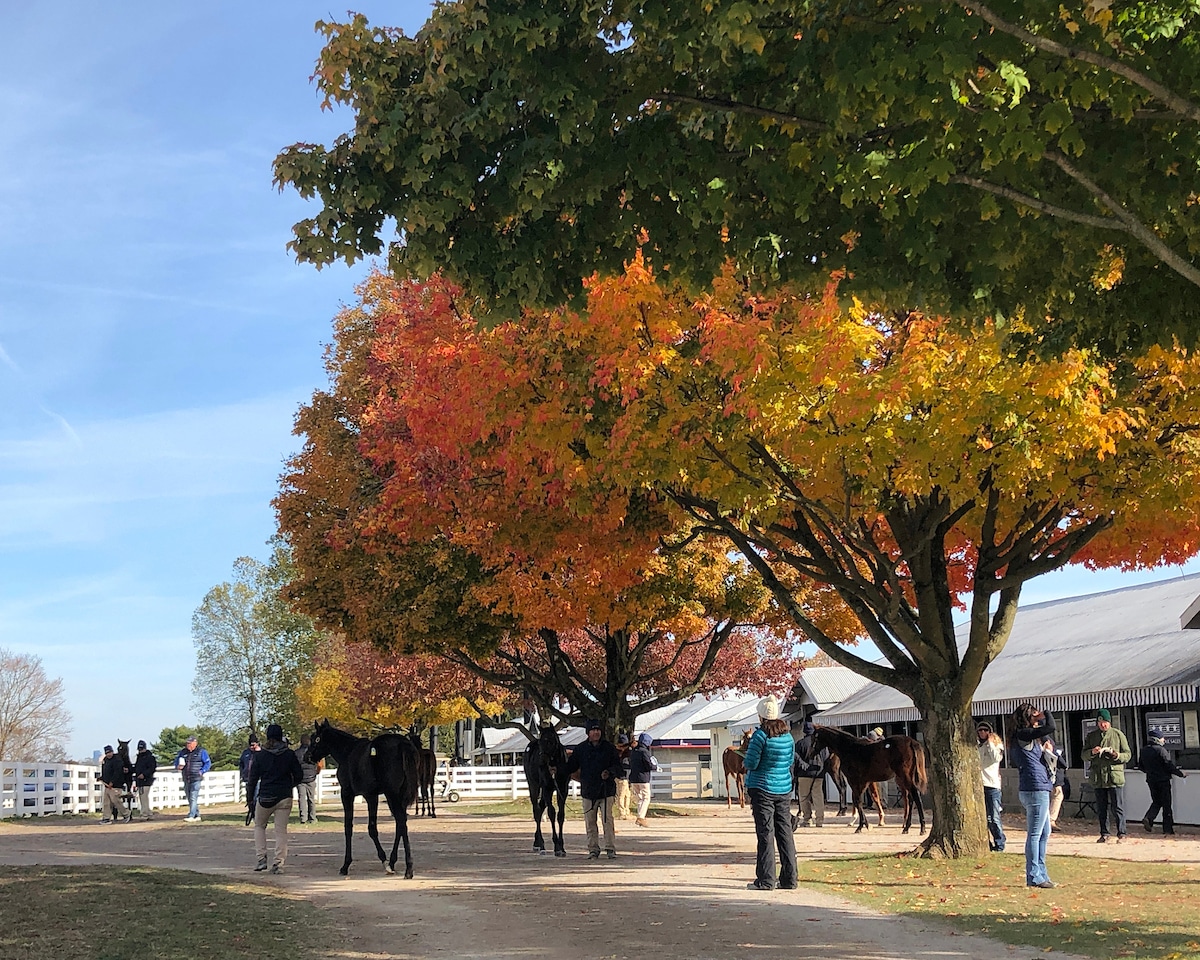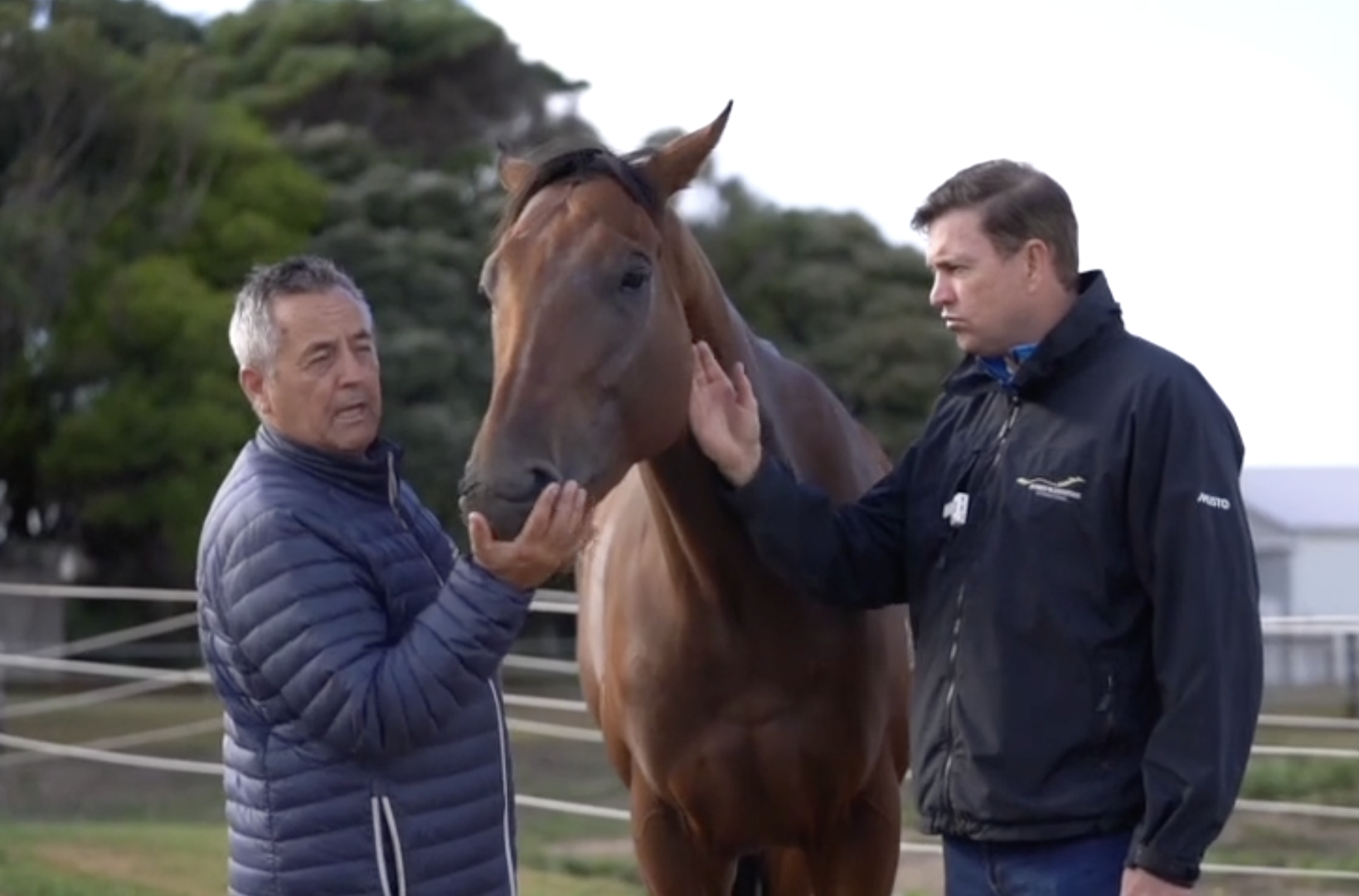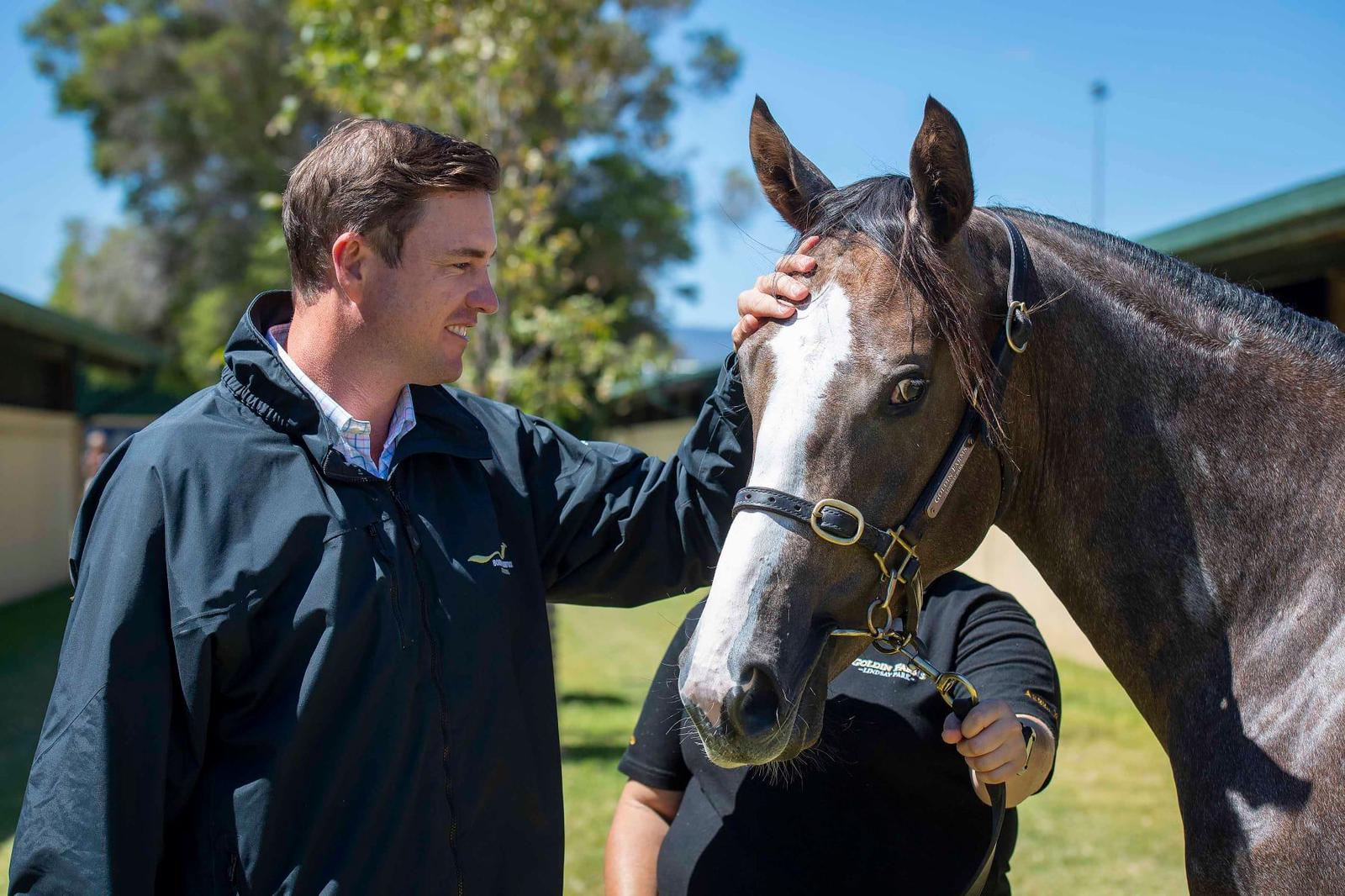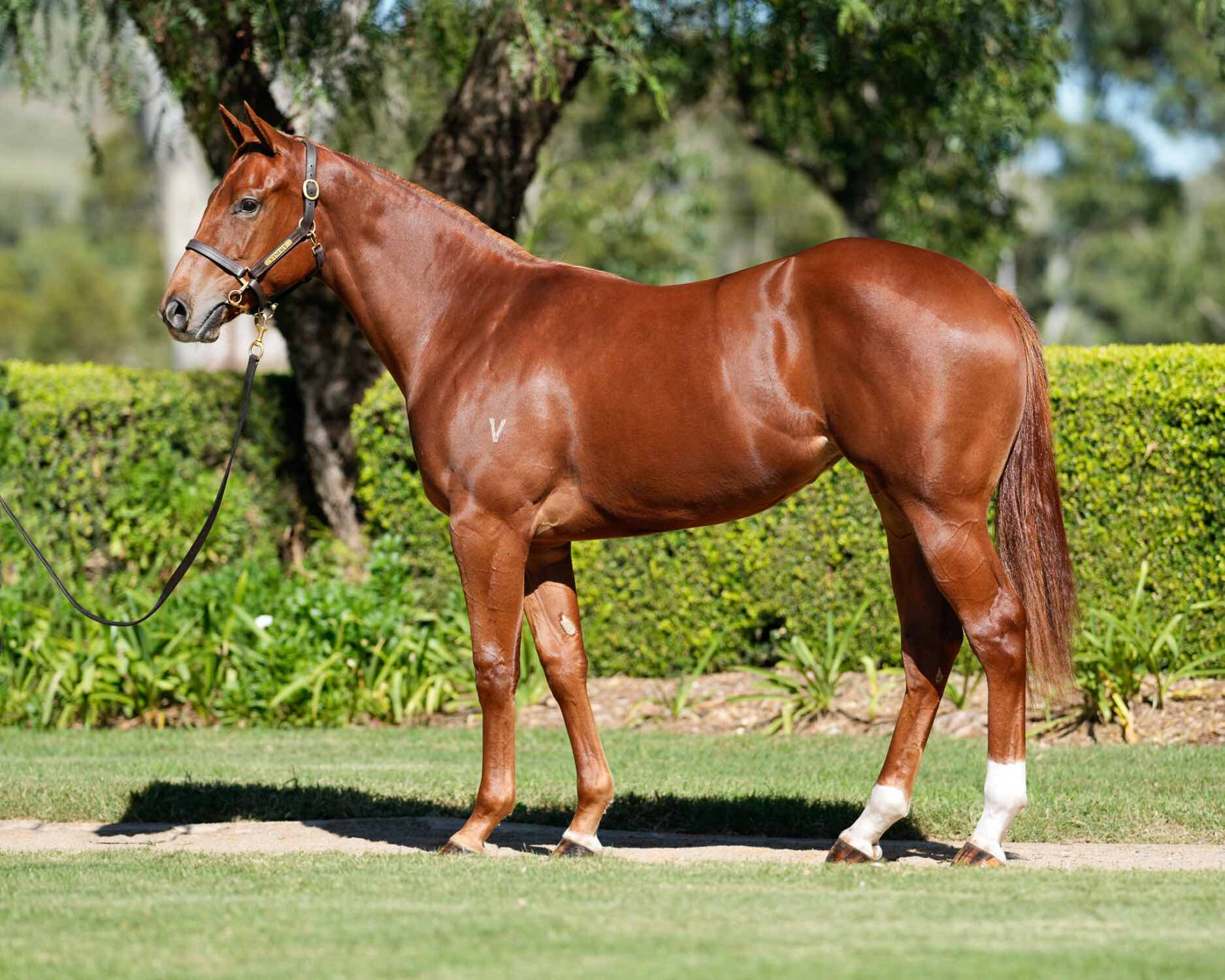Top Line, Front and Back End
When evaluating thoroughbred conformation, particularly a young one, it is crucial to consider its physical attributes and overall balance. These elements are foundational to the horse’s potential success on the racetrack. One of the primary aspects to assess is the bone structure. This includes the shape of the shoulder, the depth of the girth, and the length of the back. The angles and proportions of these features are vital as they affect the horse’s balance and movement, which are critical when the horse is galloping.
Horses with short necks are generally avoided because this physical trait can disrupt their balance during a gallop. A well-proportioned neck contributes to the pendulum effect necessary for smooth and efficient movement. Additionally, a shorter back and a good angle from the hip to the hock are desirable because they provide the power needed for propulsion. The efficiency of stride and the potential for a longer stride length are directly influenced by these angles. Research indicates that an above-average stride length is often found in successful racehorses, making these angles essential for optimal performance.
Muscle structure is another critical factor. From a side view, the hip area should display sufficient muscle to indicate power. When viewed from behind, the gaskin muscle, which runs above the hock, should be well-developed as it is responsible for much of the push. The triceps and other muscles extending from the rear must also be prominent. These muscles are akin to the hamstrings in humans, providing significant power. A well-defined hip, particularly in sprinters, is crucial as it acts as the engine room, delivering the explosive power required for fast starts and sustained speed.
The front end of the horse is equally important. The shoulder angle, combined with a deep girth, supports the forearm muscles. From a side view, a protruding chest signifies good muscle development, which is further confirmed when viewing the horse from the front. The forearm muscles should be robust, contributing to the overall power and efficiency of movement. An aerodynamic chest shape, often resembling an upside-down V, indicates natural muscle development and power.
As the horse matures, these natural muscles will only become more pronounced, giving a significant advantage. A well-defined wither is another positive trait, as it is commonly found in successful racehorses. The wither plays a role in the horse’s overall growth and development, supporting balanced and correct movement.
The horse’s head, particularly the eyes, for myself are important. Their head and eyes provide insight into its temperament and willingness to train. A deep, true eye often reflects determination and a positive attitude, traits that are essential for a horse to respond well to training and thrive in competitive environments. In young horses, this determination and willingness are critical indicators of their future potential.
Evaluating a young thoroughbred requires careful consideration of its physical attributes and overall balance. From bone structure and muscle development to temperament and colour, each trait plays a significant role in determining the horse’s potential for racing success. By understanding and identifying these key traits, breeders, trainers, and owners can make informed decisions and select horses with the highest potential for success on the racetrack.
Legs: Ensuring Strength and Longevity
When assessing the legs of a thoroughbred racehorse, it’s essential to consider the specific requirements for racing compared to those for broodmares. For racehorses, a lighter bone structure is preferred. Unlike broodmares, where heavier bones are advantageous due to their role in producing future generations, racehorses benefit from a more streamlined build.
A racehorse should have clean, well-defined bones, particularly through the knees. Horses that are set back on the knees are avoided because this conformation places additional stress not only on the knees themselves but also on the tendons behind. Clean knees, viewed from the side, are crucial for maintaining the horse’s soundness and reducing the risk of injury.
The angle and length of the pasterns are also critical. Ideally, the pasterns should be of moderate length, falling within the 45 to 60-degree range. This angle helps ensure that the weight is evenly distributed through the pasterns and into the hoof wall. Such an alignment minimises undue stress on the tendons and reduces the likelihood of injury. A clean angle through the pastern and hoof wall is essential for maintaining the horse’s overall structural integrity as it acts as a shock absorber for the body.
When evaluating a horse from the front, attention is given to how the weight is distributed through the knees. Horses with offset knees or other irregularities can still perform well, but the goal is to select those with optimal conformation to enhance longevity and durability. Observing how a horse moves is as important as how it stands. Movement reveals how weight is distributed down through the legs, including the knees and pasterns.
The primary objective is to increase the chances of a long, successful racing career. Proper leg conformation allows a horse to withstand the rigours of training and racing, providing owners with the best opportunity to enjoy their time at the races and achieve a return on their investment. By focusing on these physical attributes, breeders and trainers can select horses that are not only fast but also resilient, capable of sustained performance over time.
Feet: Ensuring Soundness and Performance
When assessing a thoroughbred’s potential, one of the critical aspects to examine is the feet. From a side view, it’s essential to ensure that the horse has enough heel and that the feet exhibit good conformation without flares or cracks. The even distribution of the feet is crucial.
Picking up the foot at a horse sale allows for a closer inspection, ensuring an even width from side to side and front to the frog. A well-shaped foot, neither too pointy nor out of balance, acts as an effective shock absorber. Issues such as clubfoot or mismatched feet sizes can increase the likelihood of future problems, which is why these traits are typically avoided, especially in fillies that are potential future broodmares. Negative traits in their feet might be passed on to their progeny.
Moving down to the hind legs, the length from the hip to the hock is crucial. A well-developed hock is desirable, as shallow hock bones often result in instability, causing a “wobbly” gait. When viewed from behind, the hock should have a clean, straight line down to the ground, with only a slight backward slant. Sickle hocks, where the hocks are positioned too far under the body, are undesirable as they place excessive pressure on the lower hock, leading to the development of painful curbs and making the horse harder to train.
The movement of the horse, particularly when walking away, provides further insight. A strong push through the hocks and proper foot placement are essential. Feet that point inward or outward indicate inefficiencies in movement, reducing the horse’s power and speed during a full gallop. Ideally, the feet should come straight down from behind to maximise push and torque. A decent width between the hocks also indicates strength, crucial for sprinters and middle-distance horses to achieve explosive speed out of the barriers.
Tight, cool tendons in a horse are a positive indicator of health and performance readiness, suggesting that the tissues are non-inflamed and well-conditioned. Observing the tendons on the front legs as the horse walks away is crucial; straight tendons are preferred, as curvature can signal potential issues. How the horse picks up and places its front feet down can reveal a lot about its gait and future movement efficiency.
Curved tendons in horses can lead to various issues, including a higher risk of injuries like strains and tendonitis, reduced performance due to inefficient movement, and chronic pain affecting overall well-being. These tendons are more prone to inflammation, causing swelling and further deterioration of tendon health. Additionally, horses may develop compensatory movement patterns to alleviate discomfort, potentially leading to secondary problems in other parts of their musculoskeletal system.
When the horse turns and walks back toward you, paying attention to the gait can provide early insights into how the horse will move at a gallop. Good movement through the shoulders and hips, coupled with strong drive from the hind legs, is essential. Sprinter horses, in particular, should exhibit efficient, powerful movement without excessive overstretching, a trait more commonly seen in stayers.
Temperament is another critical factor. How a horse reacts when asked to walk, whether it drops its head and willingly complies or shows resistance, can indicate its future behaviour in training. Horses that calmly enter their box and focus on their feed demonstrate a positive attitude and are more likely to enjoy and respond well to training. Observing the handler’s confidence and the horse’s response to handling can also provide valuable clues about the horse’s temperament.
Evaluating a thoroughbred’s feet, leg structure, movement, and temperament offers a comprehensive view of its potential as a racehorse. By carefully examining these aspects, breeders and buyers can make informed decisions, selecting horses that are not only physically capable but also mentally prepared for the rigours of racing. This thorough evaluation process helps ensure that the selected horses have the best chance of achieving success on the racetrack.
Read about the most important conformation traits in yearlings here:









